It’s funny how news reports remind you of old departed friends. A recent news report on the $52 million sale of Ferrari GTO 5111GT brought back a score of happy memories of times spent with American motoring journalist and raconteur Henry Manney III.
Henry Manney III may not be a familiar name to a modern generation, but back in the 1960s he not only sprung to prominence with his witty and amusing articles in Road & Track magazine but he actually created what we would call the modern “loose” form of writing about cars. He dispensed with the turgid prose of the regular motoring writers of the day and replaced it with colorful turns of phrase; even inventing his own words to express his feelings and mood.
So why did the sale of the GTO bring Henry back to me? Because he is, I think, the only motoring journalist who ever actually OWNED a GTO.
But let’s go back to the beginning. Henry Manney was born into a family with a military tradition behind it. His grandfather was Admiral Henry N. Manney, Chief of the Bureau of Equipment in the U.S. Navy who urged the Navy to create its own wireless system when Marconi refused to sell his new radio equipment to the US.
Henry’s father, Henry Manney II, was a Colonel in the Marine Corps. As for our Henry III, he was a radar mechanic in the US military and thanks to his interest in opera and ballet he used his GI Bill to pay for ballet lessons before joining the New York Ballet. It was here that he met Annie Statz, the daughter of Arnold “Jigger” Statz, the famous baseball fielder who ranked with Ty Cobb and Hank Aaron. Henry and Annie married and had three children; Patrick, Henry IV, and Cecilia.
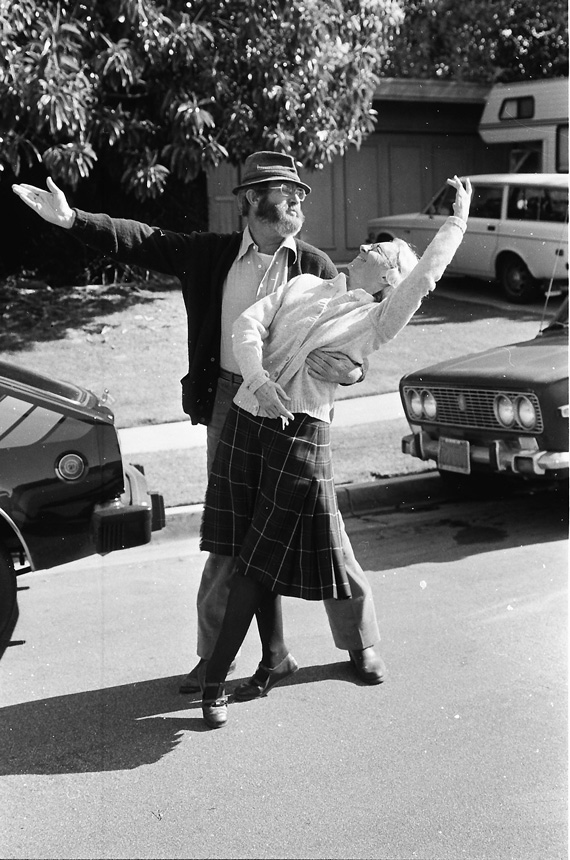
Ex-ballet dancers Henry Manney and wife Annie pose outside their house in California in the mid-1970s.
Henry was always keen on cars and on a visit to Paris in 1948 – when he was 26 – he rode his Matchless motorcycle out to the famous Montlhéry track to watch Luigi Chinetti win the 1,000 km race in Enzo Ferrari’s 166 MM.
Back in the States he started out racing with a Crosley Hotshot and then, in August 1951, jumped into the deep end by buying a Ferrari 275S Spyder (0032MT). This was a mighty car that had been raced by Luigi Villoresi in the 1950 Mille Miglia, Alberto Ascari in the 1951 Mille Miglia, and Luigi Chinetti drove at the 1951 Le Mans. The factory then tarted it up for the Turin Motor Show and this was when Henry bought it. He raced it a couple of times but admitted the car scared him and so he sold it the following April to John Edgar for Jack McAfee to race. [Manney also purchased the ex-Cunningham “little blue coupe”, a Ferrari 166/195 MM Touring, s/n 0060-Ed.]
With his wife and children Henry moved to Switzerland. In the 1950s began writing articles for various magazines including Road&Track but he was not to join the staff until 1961.
Around 1957 Alfred Woolf, a fine journalist and PR man, had started an English version of the U.S. magazine Sports Cars Illustrated and in one of the early issues there appeared an article by a mysterious Henri Gentilhomme, where he described taking part in the Automobile Club de Suisse racing drivers school that was run at Monza. His way of describing how legendary Mercedes-Benz team manager Alfred Neubauer addressed the assembled tyros has always stuck in my mind: “If you have ever heard a sea elephant whose fish has just been pinched by a seagull you will get the idea.”
I became a fan, and when Alfred Woolf and I went to visit the Speedwell Tuning shop in London – where Graham Hill was a mechanic and director – he introduced me to this bespectacled American dressed in what was to become his familiar tweed jacket, soft hat and shoes with rubber ripple soles. This was Henry N. Manney III, or Henri Gentilhomme. From then on we hooked up at various rallies and races for the rest of his life and some great fun on events.
Henry was a very good photographer, originally with Leicas, but in 1959 he bought the first single lens reflex Canon, the Canonflex and when he changed it for a new one, I bought his original and have stuck with Canon ever since.
He always had nice cars and after his Alfa Romeo Giulietta period he moved on to Lancias. I remember us chasing the Monte Carlo rally in his Flavia coupe. Going down a Col, the Lancia started sliding on the sheet ice and 200 meters away were the signs of a tight right hand bend. Henry gently tried to steer out of the slide muttering we’re all gonna be killed, and then caught it and carried on as if nothing had happened.
That year Ford Motor Company had run a raft of Falcon Futura Sprints on the Monte and after the event Henry and I were given one of the reconnaissance cars to “test.” It was a great car to drive and reasonably sure footed on the ice but, as Henry shouted on one occasion, “I’d hate to have to drive it fast.” On our return to Monaco race driver Sir John Whitmore asked us how we got on. So I played a tape recording of us on the road and they promptly told us that we were not driving the Falcon fast enough!
Known for his amusing descriptions of people – he once called one driver who usually made up the field in events – the “ abominably slow man”. Gendebien became “Jellybean” and when describing a paddock spat between Jo Bonnier and a photographer who had taken his picture, Henry laconically remarked of the famously vain Swede, “This must be the only occasion Bonnier refused to have his picture taken.” However, the secret of his stories was that he was particularly friendly with the race mechanics and this was where he got most of his inside stories; and they loved him for it. He used to carry cookies or apples in his coat pocket and in the midst of a conversation with a mechanic would remark, “Hey, would you like an apple?” and then fish one out of his pocket.
Not long before Henry and Annie returned to the United States he surprised us all by buying the Ferrari GTO. It was sold to him by French racing driver and Le Mans winner Jean Guichet, who had won the Tour de France in the car.
It was chassis 5111 GT and Henry went to Maranello to pick it up. When he got there he found it had three huge iodine quartz spotlights mounted in a bar across the front that Guichet had added so that he could run in various rallies.
Back in Paris he recalled the drive from Modena and how at every village he drove through with the GTO, “…..the girls were lathered up enough to shave a water buffalo.” [This was part of an article for R&T but the phrase, needless to say, never saw print-Ed.]
About six months ago I talked to Guichet about his selling of the GTO to Henry and he remarked that he had sold it far too cheaply – only a few thousand dollars – and added that he was amazed at the prices GTOs sell at these days.
This particular GTO, delivered in September 1963, had a very successful early racing career and was in fact the last fitted with what we could call the traditional GTO bodywork. A few months later the first of the 330LM style bodies on the ’64 GTOs appeared.
Guichet had delivery of 5111 GT just before the 1963 Tour de France and he chose Jose Behra, brother of the more famous Jean Behra, as his co-driver. They added a few bumps and scrapes to the car, as was normal with GTOs on the Tour de France, but came home winners. It was not the first GTO Guichet had owned as he bought 3705 GT the year before with which he had finished second at Le Mans.
During 1963 and 1964 Guichet used the GTO for rallies, hill climbs and races and was a regular winner. In 1965 Henry Manney persuaded Guichet to sell him the GTO and was to own it for six years. When he, Annie and the children returned to the USA the GTO went with them, but Henry became increasingly frustrated having a car that he could not let loose like he had done in Europe and sold it to Chris Cord.
Eventually the genial Paul Pappalardo bought it in 1974 and owned it until 2008 when it was sold to a private collector. Paul brought the GTO back to Europe to regularly compete in the Shell Ferrari Historic Challenge races, so it was never left lying about as a trophy car.
At an eye-watering $52 million dollars one wonders if we will ever see this Tour de France-winning GTO out on a track again. Also, I wonder what dear old Henry would have thought of the modern day prices of GTO’s.
I leave the last words on the car to Henry who, after he had sold it, said, “I am sorry to see it go, largely because it represents days that never will come again, but at least I had a taste of the real thing.” Agreed.
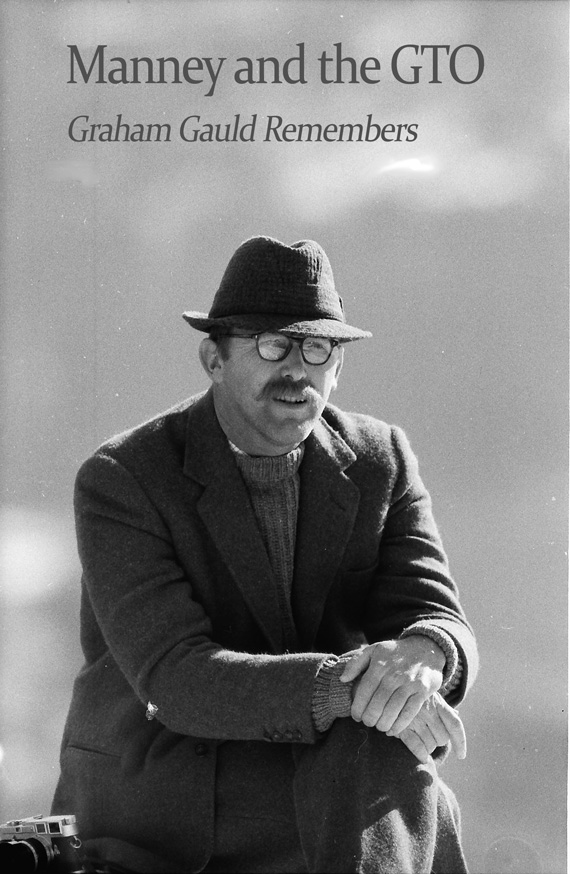
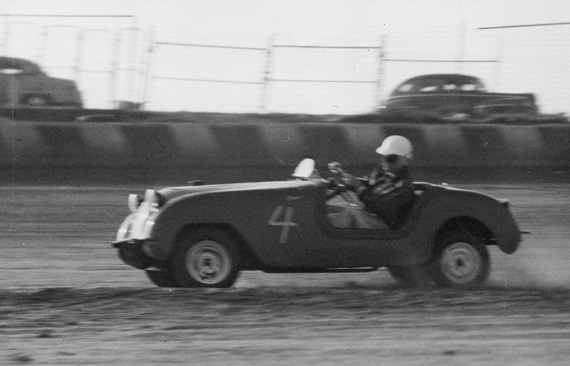
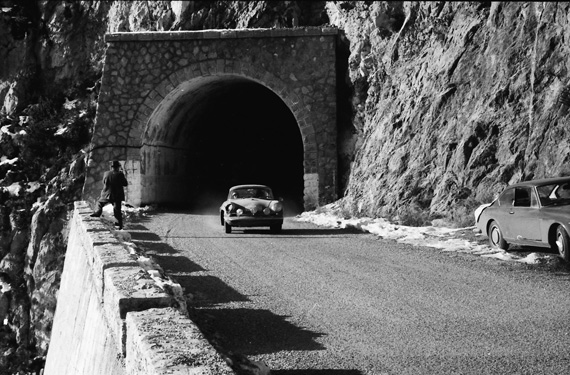
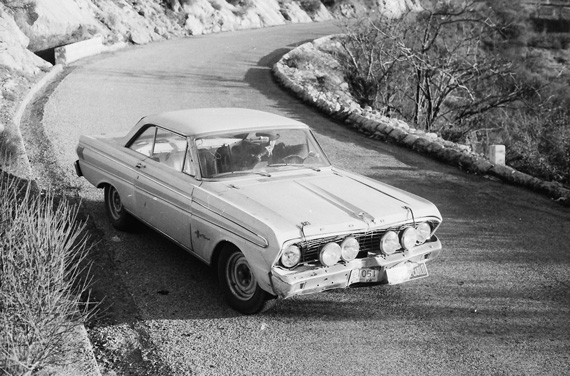
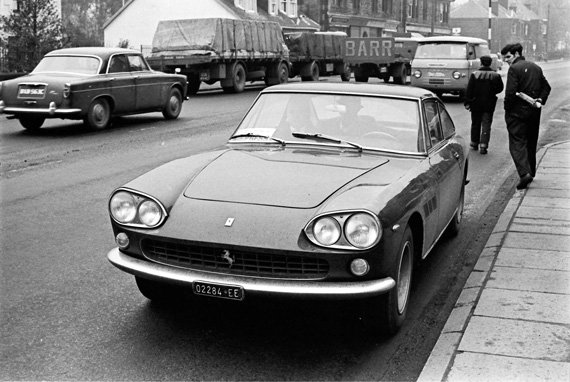
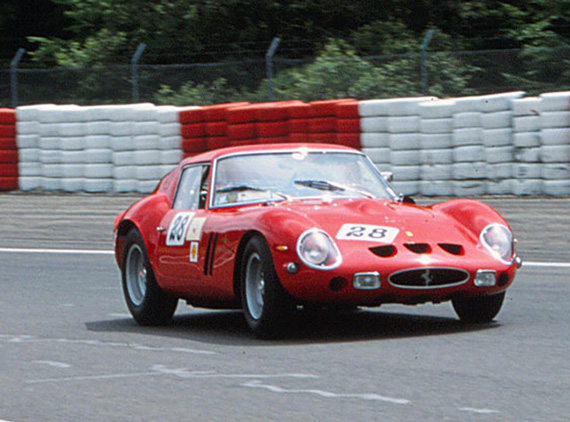
The stars collded with Henry Manney III ! A great era in motoring with some truly great drivers and fantastic cars which were still able to incorporate the soul of their designers; as opposed to the computer generated supercars of today. That Henry was there to write about it, and how he wrote, resulted in great joy to those of us fortunate enough to be interested and about at the time!
As to your last quote of Henry’s, I can only add, as one who put 80,000 rapturous miles on a 275/GTB.4 Ferarri Berlinetta, picked up new at Maranello and to have had the privilege to race some of Enzo’s mid-50’s creations; “Right On, Henry!”
R.I.P. Henry, auto journalist supreme!
Sincerely,
Dick Irish
In the mid 1960’s Henry Manny III did some writing for a new British motoring magazine called CAR Magazine for which he wrote some articles. The one that comes to mind was his road test of two GTO’s, his Ferrari GTO versus a Pontiac GTO of that era. The acceleration and brake testing took place on an airfield in the middle of farming country. The Ferrari put in a good performance under acceleration and also when the latest disc brakes were applied. The Pontiac also did reasonably well on acceleration but the picture accompanying the Road Test had the Pontiac in a corn field well past the end of the test runway indicating that the Pontiac had cooked its drum brakes totally and had failed the brake test by some margin!
Henry also did a road test of an early E Type Jaguar and rated it ‘The best bird puller ever!’
I believe he had a brain tumor and went into a coma in the early 1970’s and died shortly afterwards. I rated Henry Manny III as an American version of our British Dennis Jenkinson (Jenks) of Motor Sport fame or George Bishop, who also contributed to CAR magazine around the same time.
The writings of HM III(Our Friend) is the main reason I was drawn to sports cars in 1961. When I read what passes for writing in most of today’s motoring periodicals, I miss the man even more. The end quote of the article, for me, says it all…”at least I had a taste of the real thing. yr obdnt srvnt.
Henry was certainly larger than life and always ready with a great story. In the early 1960s he taught many of us living in Europe at the time how to follow a race in the days before electronic feeds, TV and live timing. At the ring , in particular, practice and qualifying days were for roaming the track and photographing all the contenders at the best spots. Then on race day one just had to park near the pits at start/finish and keep a good lap chart to follow the action.
HNM III was one of the reasons I turned to writing to earn a living — though never enough for a GTO. I wrote ads for R&T for six years, visiting their building in Costa Mesa often. And one time I was privileged to meet the great man. Of course I was tongue-tied, but maybe that’s a writer’s thing. He introduced me to Europe, European cars and racing and spirited writing. Henry, again my thanks.
While Henry Manny III was in Europe in the 1960’s, as European Correspondent for Road & Track, he also contributed to a new British motoring journal, CAR Magazine. The article that comes to mind was his Road Test of two GTO’s, his own Ferrari GTO and a Pontiac GTO of the same era. Henry took both vehicles to an airfield with a longish runway where he carried out acceleration and braking tests. The Ferrari GTO performed well under acceleration and the disc brakes helped to produce the required retardation. The Pontiac GTO did reasonably well in the acceleration test, however the braking test was the subject of the Road Test head line picture accompanying the article and showed the Pontiac GTO in the middle of a corn field some distance from the end of the runway having failed the brake test, by some margin, by cooking the vehicles drum brakes!
In an article for the same CAR magazine, testing an early E-Type Jaguar, Henry noted that ‘this car is the greatest bird puller ever’!
Sadly Henry went into a coma in the early 1970’s from which he never recovered. In my opinion Henry Manny III was an equal to Britain’s Dennis Jenkinson (Jenks to the Motoring World), European Correspondent of Motor Sport fame and George Bishop, who also wrote for CAR Magazine.
An enjoyable piece Graham, thanks.
I received my subscription as a gift from my parents in 1949 and eventually came to love Henry’s work. To this day I am still prone to slip in a mannerism or two in my correspondence.
He was a gem.
Hi Graham:
I certainly enjoyed your story on Henri Gentillehomme. Henry and another automotive writer by the name of Warren Weith aligned with David E.Davis and Brock Yates in making me interested in good automotive writing. I have a book of Henry’s collected works called Manney at Large – collection of his travels in Europe and continental tracks. Weith once wrote me a letter which I still have commenting on my comments on a Sebring Sprite he once drove on the streets of New York. Since I was once a long term owner of a Bugeye Sprite I felt I should add my two cents worth to his experiences. Try driving a Sprite in a Canadian winter when some days the snow blows in one side of the car through the side curtains and out the other side! At any rate enjoyed the story on Henry.
Cheers,
John R.Wright
An enjoyable piece Graham, thanks.
I received my subscription as a gift from my parents in 1949 and eventually came to love Henry’s work. To this day I am still prone to slip in a manneyism or two in my correspondence.
He was a gem.
I started reading Road & Track around age 12 or 13 in the early sixties. I think the hormones and cars hit at the same time. My family would make fun of me because the magazine would come and I would disappear until I had finished it. I would check the table of contents and save anything by Manney (the best parts!) ‘till last.
I vividly remember his fanciful reporting, and references to his “truck like Ferrari” on the tight roads of the Targa Florio.
I remember Henry using his R&T column to advertise the car for sale. His idea of marketing the car was to describe it as “one of the few that hasn’t been through every rock wall in Europe.” Always loved his writing while envying him his cars and connections….
Henry wrote a wonderfully discriptive note about the car to Dean Batchelor in hopes Dean would buy it (or the ex-Surtees 330 GT) and at the end of the note he said “It’s a motorcar with balls.”
In addition, the comments (Bloonmberg) about the sale may not be correct. This rumor has been around for sometime and while figures in this area have been offered to several owners nothing has actually happened. The NY Times would not run the story because they couldn’t get a confirmation. It’s no streatch of the imagination but the one-percenters are concerened about family saftey making it unlikely that a private treaty sale would be publicized.
Henry was a friend and I was one of the few people he allowed to use his photos. He had given up on Road & Track in the late ’70s.
Good to see Graham’s contribution.
Henry was responsible for fixing firmly mt attitude toward my cars as drivers. For the second Monterey Historics I took my 3 front-engined Coopers for me, Joe Marina, and Allan Girdler. They’d just been repainted–dark blue with yellow wheels–and although we brought them on open trailers we’d washed them thoroughly before taking them to the track. I was under one, doing something with my body away from view, when I recognized Henry’s voice and shoes. “These are Toly Arutunoff’s,” he said. “He always has interesting cars but they tend to be tatty.” I figured they hadn’t looked as good when they came out of the shop where they were built, so what the heck: my cars would run well and just look okay. And it wasn’t till just this very moment that I realized that Henry had seen me and said that stuff as a joke. 38 years for the penny to drop, as Pete Coltrin would say…
I learned which hotels and bars to frequent before and after a Formula One race from Henry Manney! His articles always had more information than just the race.
Oh, me too! Starting college in 1951 I would spend off-times at the municipal library in the automotive collection, and there discovered Motorsport and Denis Jenkinson. In 1957 I returned driving an Austin-Healey 100-4 acquired in the Canal Zone/Panama, and a regular Road & Track reader. Denis (Jenks) had been informative and occasionally exciting but Henry Manney III (Manney) was entertaining and occasionally outrageous. I don’t mean to imply that Jenks had substance only, and Manney style. I’m saying my interest was kindled by Jenks and then fanned by Manney. Now, fifty-five years later, my interest in motor racing, and my appetite for rhetorical style as well as substance, remains. I was born at a very good time, thanks to Jenks and Manney.
I felt as if I had passed some kind of examination when Manney offered me a chaw of his tobacco: I had just seen Fangio drive a GP Mercedes off the track after his joyful laps at Long Beach, and had said, “His is the only smile here that’s wider than mine!”
Another wonderful article from Graham Gauld. Thank you! I also want to add my reminiscences about Henny Manney III to the comment list. His writing got me hooked in the 1960’s when I was a teenager, and taught me the invaluable lesson that a sense of humor and class are indispensable ingredients in fine automotive writing. Those were the days when I read R&T religiously. Nowadays, not so much.
Henry was a literary genius.
The one phrase which remains with me (from a R&T Grand Prix report – I forget which) is
” . . . . . . cries of ‘cretino’ from the Ferrari pit . . . . . . .” !!!
His end was unfairly long and very very sad.
Henry Manney III was my automotive journalist hero! I loved what he wrote, and the way he wrote it, and was inspired by him to put “pen to paper”, as it were. While I’m not in the same ball park as HMIII, its his fault that I got involved with Ferraris and tried to develop my own writing style. Thanks Graham!
They don’t come much better than Henry Manney III and Graham Gauld. I feel like I know Henry through his writings and who can ever forget “Yr Fthfl Svnt!” As much as I enjoyed Henry’s writings, probably one of the best pieces about Henry was a piece in Road & Track (July 1973) by Richard Connolly. He put together “A Glossary of Manneymania,” which was a compilation of the “…unique vocabulary of things automotive…” Things like Yumps for a rough road, Grimeheel for Graham Hill, Red Banger for Ferrari, Aaaaaaaaaaaaaaaaqueee!aaaaaaaaaaaa for a car being driven fast and smoothly through a corner and many others. Disclaimer. Graham is a long-time friend and colleague, but I believe he’s the premier raconteur today writing of things cars and motor racing. Well done, Graham.
Henry and Graham are classics for all times!
I remember when I moved to Cali back in 1967, and was living on Balboa Island. Wend shopping one day at the local Safeway supermarket, and there was HMIII. I got nervous as heck, and just said hello, instead of chatting him up ! He was the first “celebrity” that I ever saw moving to Cali.
Frank S: I also saw him at the first LBGP, and talked to him this time, he offered me a “chaw” as well !!
Alan B: you have done a great job !!!
RIP HMII
No one mentioned this so here goes Loved his reference to his wife as
” She who must be obeyed “
Henry was a terrific writer, and so by the way is Charles Fox.
Thanks,
Andy Evans
P.S. Mr. Vack , I am still holding a story for your consideration on the Seaman Delage now owned by our mutual friend Peter Giddings.
A wonderful souvenir of how easy and pleasant the life of motorists was during the sixties and early seventies. When driving fast cars was still fun. In most European countries there were no speed limits, outside the cities and villages. On the three lined Routes Nationales in France you could drive as fast as you liked and your car would go.
Nowadays even this nice country with its pleasant roads is saturated with flashing radar equipment. We have to thank Nicolas Sarkozy for that, as he introduced this ‘big brother’ system when he was the French Minister of Interior. There are now over 4100 fixed electronic radar posts. Plus a great number of Gendarmes equipped with mobile radar scanners and laser guns. Drive a few kilometers over the speed limit (130 km/h on the Autoroutes and 90 km/h on most Nationales) and you’ll find a Procès-verbal électronique (PVe) in your mailbox. The fines are steep (depending on your speed) and you also risk loosing points on your driving license. The yearly nett revenues of these ‘flasher fines’, an estimated 700 millions Euros, goes directly into the treasury of the French state.
Don’t ask me what happened to the French ideal of “liberté, égalité and fraternité”. Anyhow, the ‘liberté’ seems to be sacrificed for money.
Gijsbert-Paul, Nice
Thanks for the deliggtful piece on Henry Manney. Like many other readers, I looked forward to each and every Manney column in R&T while it was still a great magazine. Since then, Phil Llewellyn came mighty close to filling the void, but he also up and died on us far too soon.
Rog Patterson
Holly Hill FL
Back in the day with writers like HNMIII R&T was an excellent magazine. Recently it has taken a turn for the worst. I just cancelled my subscription after 40+ years. This article is a great remembrance of a time of outstanding automotive journalism.
It is coincidental to me that this story appears because only last week I sent the manuscript of More Incredible Barn Finds to my publisher and in there is a chapter on the 250GTO involving Henry. What happened was, as I was reporting to my first day on the job at Car Life magazine in 1969, I was about 500 ft. from the office (overlooking the ocean in Newport) when this dirty old dark blue car rockets by me, cutting me off and bellowing smoke. He beats me to the parking lot and when I enter the lot, there’s Henry, tweed hat, mustache and assorted british garb, offering to sell the car to me for I think $14,000. I was from Michigan, did not know what a Ferrari GTO was but was horrified this brash pitchman thought he could sell a car belching smoke like that. Later on, once I was on the job, I connected the man before me with the name Henry Manney, of whose writing I was and am a fan, I didn’t at that time I first met him realize he was a world class expert on car racing and if he said it was a good buy, it was a good buy. I went on to Hollywood to work for Motor Trend and was shocked in recent research to find that he sold it to Mr. Cord for somewhat less, something under $10,000 (anybody know the figure?) . Incidentally Mr. Cord is a relative of Errett Lobban Cord (that’s spelled right, looks like a mistake) who founded the Auburn-Cord-Duesenberg empire. The younger Mr. Cord, who looked like a racer you would cast in a movie maybe starting Robert Redford, also later had a ’64 Pininfarina-designed 250 GTO, the series II then went into modern racing with a Dekon Monza, apparently vintage racing not being “real racing” enough for him.
At any rate, going back to the 250GTO, in the book I ruminate on how I should have taken Manney’s pitch more seriously but at the time I thought of him as a humorist , not as a serious expert on car racing. My bad.
By the way the chapter goes on to talk about the Ferrari GTO used as a high school shop car and later parked in a field in Ohio with a dozen other collectable cars. Still trying to find out what the farmer sold that 250GTO for…
1967 at Road & Track office, we all went to lunch,,Henry offered me his GTO
at $ 6000,,being totally invoilved with motorcycle racing I declined his offer!
Manney did not have room in new home for both cars,,
Jim Sitz
Oregon
You’ve all said it so well, but I must add that it was Jenks and Henry N Manney III who ignited my interest in motorsport. Now that I am past it, I realize that it is good writing that interests me more than the races themselves, especially the ‘modern F1’
Wonder what happened to Dr. Hamilton Kelly’s 250 GTO. He offered it to Charlie and I for $11,000 in 68, cant recall the chassis #, Wally do you recall it? Peter I put a link to your story about HNM3 and 5111gt in my piece this weekend. All the best, Paul
http://www.livetradingnews.com/ferrari-250-gto-worlds-expensive-sought-car-18498.htm#.Un7GppufgwA
Paul Ebeling asked “what happened to Dr. Hamilton Kelly’s 250 GTO”. That was chassis no. 4757 GT and today it is owned by Tom Price, Daly City, Calif. This was the 34th of 36 Series I 250GTOs built and, after Dr. Kelly (who owned it from 1969 to 1974), it went to Chris Cord (who had his hands on four or five different 250 GTOs back then), then Jim Stollenwerck both from the L.A. area. Next was Chris Murray in Connecticut who ended up losing 4757 to the IRS for back taxes in 1982. It then went overseas to Fritz Kroymans in Holland who also lost it due to a bankruptcy. Tom brought it back to the U.S.
Wally Wyss asks, at the end of his GTO comments, what did the GTO that sat in a field in Ohio sell for? That was chassis no. 3589 GT, the ninth 250 GTO built. It was then owned by one Joe Korton who got it in 1972 from Tom O’Connor, Victoria, Texas, (Team Rosebud) where it had been used as a learning tool by a high school shop class! Korton sold it to Frank Gallogly of N.J. for approximately $1,000,000 in the late 1980s. It then went to Switzerland (Bert Stieger) where it is today, painted dark blue. Stieger paid $4,200,000 in July 1988.
Any other 250GTO questions?
My father the cartoonist Russell Brockbank enjoyed his collaborations with Henry.
They shared a similar sense of humour and my father referred to him as the old
Buzzard. He was also a true gentleman and on a visit gave my mother a beautiful
piece of china from Paris, which I now own and reminds me of their good times
together.
Thanks for the great article and photos.
My recollection from the day, was that Manney described the new XKE as the “greatest crumpet collector known to mankind”, or close to that.
Can anyone confirm this?
I do recall the “crumpet collector” quote and can confirm its attribution.
I had the pleasure of working with Henry several times. He did make a comment in print about a dinner he had a “Chez Warner”. My wife, Jane, prepared a crusted chicken with a broccoli casserole. He described it in R&T as “chicken fuzzies and green death”….Jane was not amused…..I was. He once told me he sold the GTO for the 330GT 2+2 because the GTO “was loud, smelled bad, and leaked water”. He was a terrific personality who died much too soon, and sadly, silenced as a result of a stroke. Kudos to Stan Mott for the wonderful piece.
Great article as usual from graham gauld
Henry Manney III purchased a new aluminium XK120 in 1950 and surely someone must have a photo of this car when he owned it?
I also must ask the question is the Dick Irish who has provided comments here the same dick Irish who also had an alloy XK120?
terry
All this Manney nostalgia made me wonder if anyone knows of a copy of Henry’s compiled R&T columns – “Henry Manney At Large & Abroad?” I’d love re-reading his work. Please contact me off-list.
Happy motoring and Thanksgiving?
Ford Kanzler
Santa Cruz, CA
Ford:
I have a treasured copy of “Henry Manney At Large & Abroad” and while I would not consider selling it, I am willing to make copies. Send me a note…..
Yr Hmbl Svnt,
Lynn
While there is talk of the passing of great journalists I note the silence on the passing of another great Eoin Young. Surely he must rate as one of the greatest on the very inside of Grand Prix in the 60s and 70s and the heady days of CanAm
RIP Eoin
Rhys
Yes, it was very sad about Eoin. He had been ill for a few years and we were all concerned about him. He worked and played very hard and it all took its toll on his body. I first met him when he came to England with Bruce McLaren and he acted as Bruce’s secratary and Manager before doing a great job on the PR side and of course his memorabilia business where I used to be amazed at some of the prices he was asking. I could have done with some of that kind of skill. I remember selling him my genuine Porsche toboggan some years back for a ridiculous price. It was a real head turner on the slopes and I hate to think what price I could get for it today. My favourite story of Eoin was at a British Grand Prix at Brands Hatch some years ago. A fellow Scot, Jock Russell had bought the Lotus Grand Prix car that Jim Clark used to with the US Grand Prix with the remarkable BRM H16 engine – the only Grand Prix won by that engine. Jock bought it as a rolling chassis and put a Ford V8 into it. In the paddock that day Eoin rushed up and asked me if I knew Jock because he, Eoin, had found the source of a H16 engine and clearly wanted to buy the Lotus, fit the engine and make a penny or two. As it so happened I had been talking to Jock in that very same paddock about five minutes before so I brought the two of them together and they had an amazing verbal battle as to who would by what from whom. It was left unresolved and one of the few occasions Eoin lost out. Great guy, great fun and a great loss.
Graham
My apologies for being nearly a year late in leaving a comment, but had it not been for a friend who alerted me to Graham’s fine article, I would have missed it entirely. I knew Henry in the early days before he moved to Europe. He was a close friend of Jack McAfee, and we met just about the time Jack opened up his VW/Porsche dealership in Sherman Oaks, CA. I was going to UCLA at the time, but used to spend time at Jack’s after school. Henry would show up almost daily, and we became friends just hanging out, passing the time talking about cars and racing and automotive design, and sometimes even the Corp de Ballet. But always with Henry’s wonderfully off beat perspective. He talked like he wrote, which I didn’t realize until he became a writer for R&T. He used to tell me about the demise of his lovely blue 2 litre Ferrari coupe, which he said was in a basket because of his friend, George Metzger. Henry loaned it to Metzger, who drove it until he blew up that lovely little engine. Henry said that Metzger’s philosophy was, “Drive a little faster and maybe the noise will go away!” Among other Henryisms, when his wife, Annie had a baby, I asked, “Boy or girl?” His reply was…..”She had a MAN!” One of the last times we had one of our extended conversations, it was in the showroom at McAfee’s, when he and I pontificated on how one would go about designing a Ferrari station wagon! I lost contact with him after he moved to Europe. Although I avidly read everything he wrote, what I really missed was the man in person. What a delight he was!
Henry was indeed a great raconteur, with whom I shared the occasional glass of plonk and florid conversation. We usually started off denouncing the governments’ emasculation of “proper” motorcars and wound up extolling the virtues of various composers/dancers/naval architects. He particularly liked my not-yet-ex-wife, a Joffrey dancer…I have a hazy memory of offering her in trade for the GTO. Henry thought it a splendid idea, but lamented that he was pretty sure Annie would veto the proposal. Over the years, we traded many letters, which I lost to a garage fire years ago. I miss them and him every day.